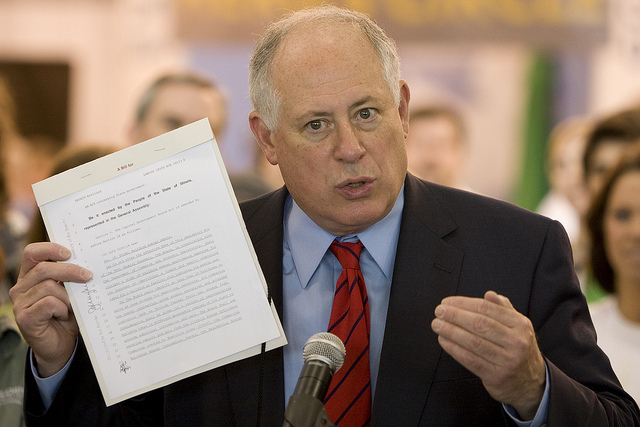Texas budget analysts and pension officials are attempting to draw lawmakers’ attention to the unfunded liabilities of the Employee Retirement System of Texas. The analysts and the director of the pension system say the liabilities, if left unaddressed, could lead to a credit downgrade for the state.
From the Austin American-Statesman:
At a legislative hearing this month, outgoing Employee Retirement System Executive Director Ann Bishop piqued lawmakers’ interest when she said the plan’s current unfunded balance of $7.5 billion could at some point affect the state’s good credit rating if the Legislature doesn’t devise a plan to pay it off. The 2016 onset of new accounting rules will double that risk, she noted. The state only has 77 cents for every dollar needed to pay future benefits, according to the retirement system. If not addressed during next year’s legislative session, it is projected to grow to nearly $10 billion by 2018.
The agency again has asked the state for additional funding to make the plan actuarially sound – so that contributions and investment returns cover expenses and payouts – which it has not been since 2003. That would require an additional $350 million every two years.
Absent that, Bishop told members of the Senate State Affairs Committee that the solution is some combination of more benefit cuts or increased contributions from both the state and employees. Lawmakers in 2009 and 2013 increased state and employee contributions and cut benefits for newly hired workers.
While that “has done a lot to help close the gap,” Bishop said “it isn’t enough.”
“It will have to be fixed. And it’s just going to get worse before it gets better,” she told the committee, noting the plan will run out of money to pay for promised pension benefits by the 2050s if nothing changes.
That “sounds like a long time from now,” she continued, but “when you’re talking about attracting people into the workforce and you’re telling them they’re going to pay into a fund for 30 years and not have it in their retirement, that’s not much of a benefit.”
She also warned that further diminishing the plan could inspire a lawsuit or – even worse – spark a mass retirement exodus as more than a third of the state’s workforce is either already eligible to retire or will become so in the next five years. In 2013, retirees received an average annuity of $18,946 from the plan.
ERS Texas manages $25.6 billion in assets.








